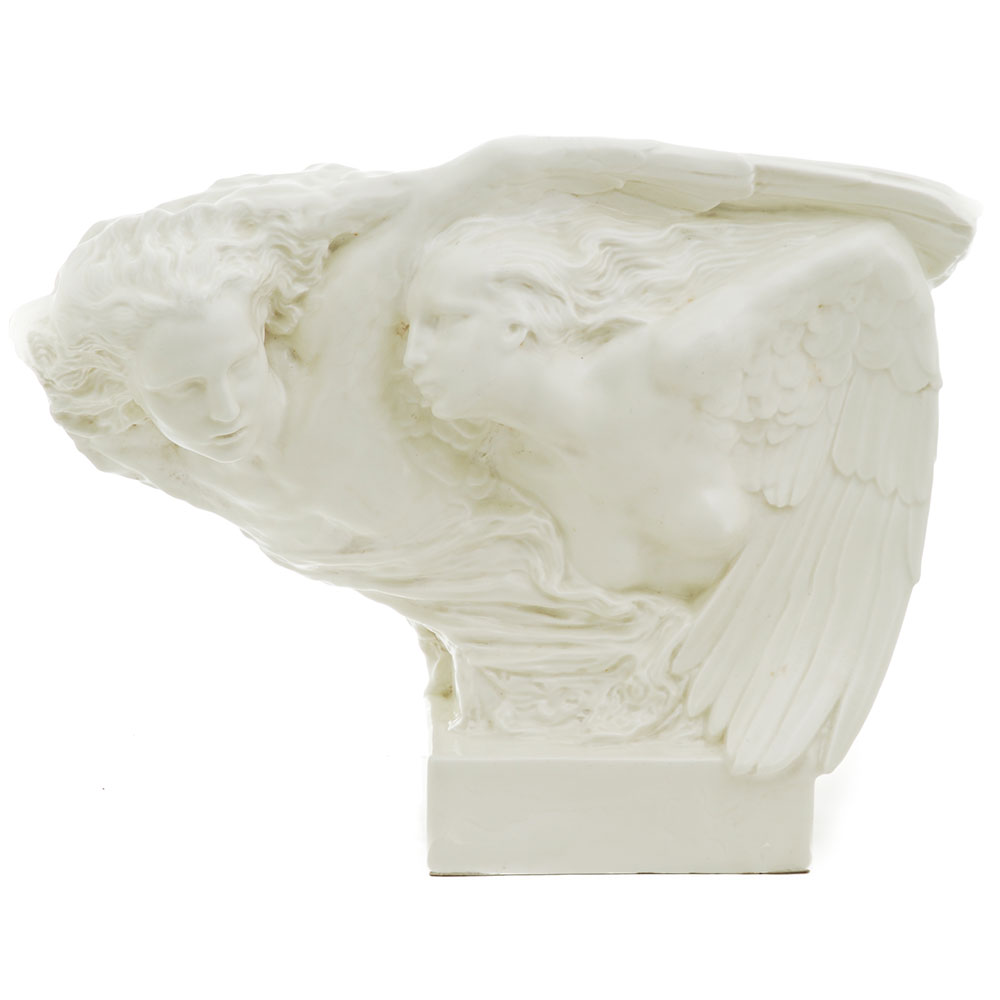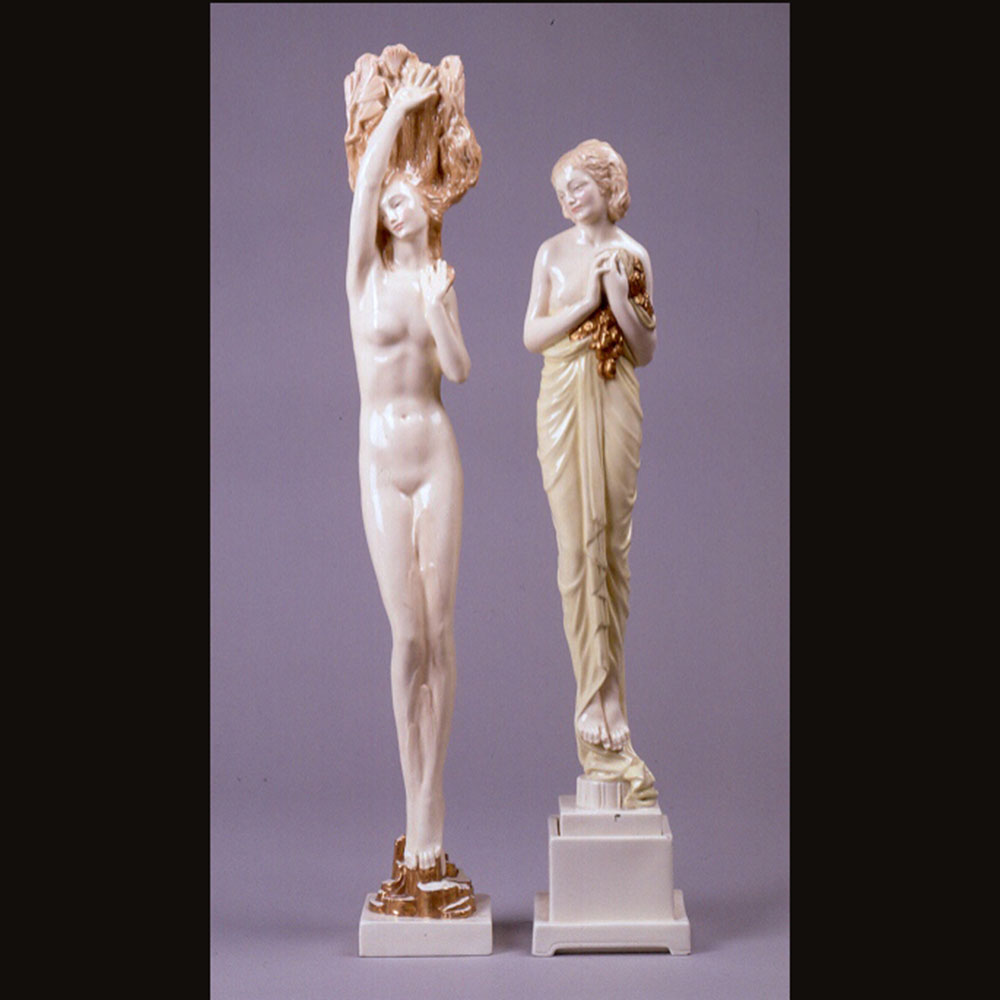

The solar eclipse on August 21st had us casting around the WMODA collection for astronomical connections. This striking Royal Doulton flask in the Art Deco Gallery depicts Endymion, who was the first person to observe the movements of the moon, according to Pliny the Elder. In Greek mythology, this handsome astronomer was the lover of Selene the moon, who is portrayed arousing him from his slumbers. The other side of this unique design by Richard Garbe features Aurora, goddess of the dawn, who announces the arrival of the sun each day.
Royal Doulton’s first limited edition figures in the 1930s were based on ivory and bronze sculptures exhibited at the Royal Academy in London and other venues by Richard Garbe, a distinguished Professor at the Royal College of Art. Garbe learned the art of ivory carving from his father, a Prussian ivory carver, and helped to revive this style of sculpture in Britain.




One of Garbe’s most complex works in ivory is Primavera now in the Victoria and Albert Museum, and this carving inspired the Royal Doulton figure of Spring for which Doulton developed a special ivory porcelain body. An edition of 100 of this exquisite figure was introduced in 1934 but like most of Garbe’s work for Royal Doulton, few have survived.
Richard Garbe favored subjects from classical mythology, such as Endymion the lover of Selene the moon. His sculpture of West Wind depicts the Greek god Zephyr, the gentlest of the four winds which heralds Spring and his Spirit of the Wind features a wind-swept Greek goddess in diaphanous robes. Garbe also modeled porcelain masks which were a popular form of wall decoration in the Art Deco era. His study of Lachesis, was inspired by one of the three fates in Greek religion who determines the destiny or thread of life. The Royal Doulton masks of Fate in ivory, green and gold glazes were based on a bronze original.


One of the most spectacular sculptures in the Art Deco gallery at WMODA is the bust of the composer Ludwig van Beethoven with his muses, which was reproduced in terracotta and ivory stoneware at the Royal Doulton factory. Garbe also designed a monumental jardinière for Doulton and a garden statue of a Sea Lion in salt-glaze stoneware which was based on his 1929 stone carving in the Tate Gallery in London. A smaller version of the Sea Lion is displayed at WMODA.
Garbe was a pupil of the Central School of Arts and Crafts when it first opened in 1896 and returned to teach there before being appointed Professor of Sculpture at the Royal College of Art in 1929. He worked with the Doulton factories in Lambeth and Stoke-on-Trent between 1933 and 1939 and designed sculptures for limited reproduction in salt-glazed stoneware and porcelain. Later, Garbe worked for the Wedgwood factory and three of his designs were put into production in 1941.
